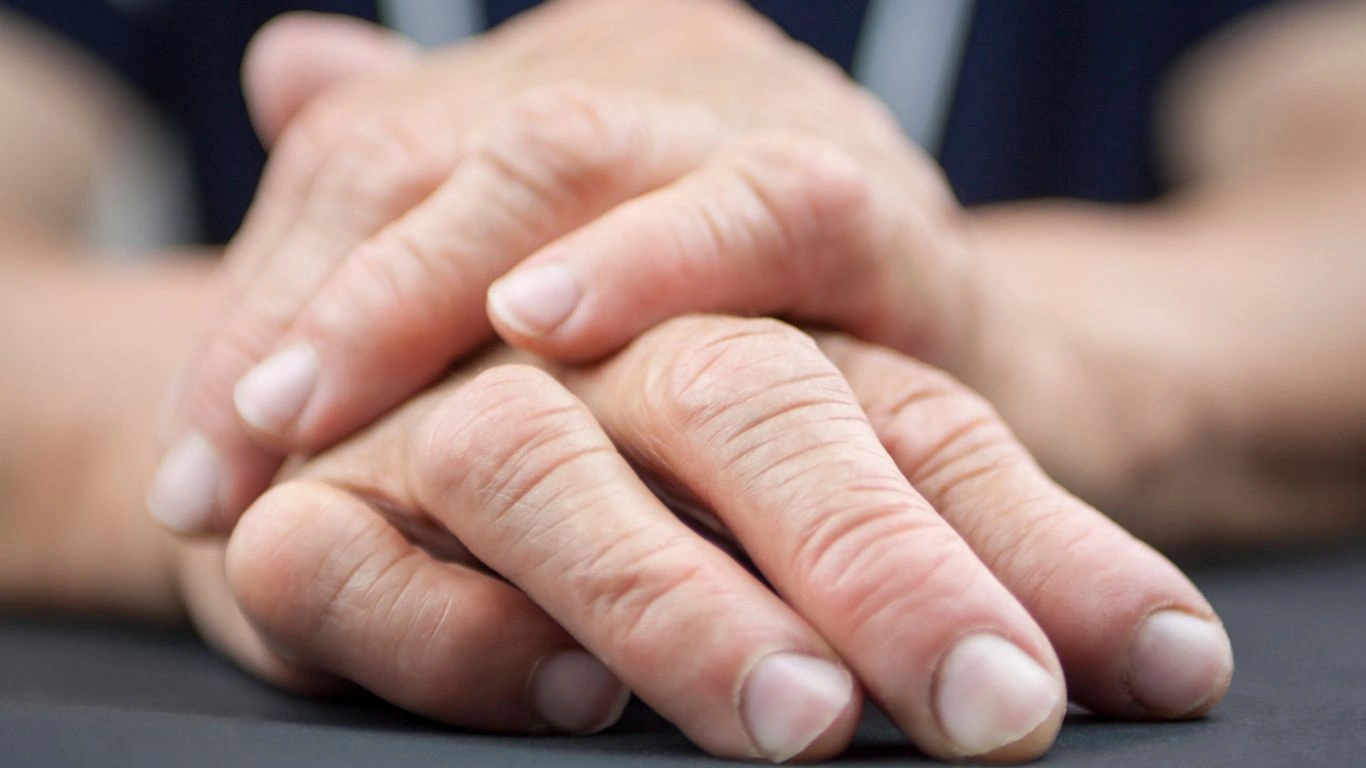Recognizing Early Warning Signs of Rheumatoid Arthritis for Quick Action
As a Rheumatology Nurse Practitioner, I’ve sat across from countless patients who’ve asked me the same thing in different ways: “What are early warning signs of rheumatoid arthritis?” It’s a question I wish more people asked sooner, because with RA, timing really matters. Rheumatoid arthritis is sneaky—it doesn’t always come on with fireworks. Sometimes it whispers. And if you know what to listen for, you can get ahead of it before it robs you of your mobility, energy, and comfort. In this post, I’ll walk you through what I’ve seen, what the research says, and the subtle signs people tend to brush off until it’s too late.
Understanding the Basics of Rheumatoid Arthritis

RA isn’t just “arthritis” in the way many think of it. It’s not wear-and-tear from aging or overuse—that’s osteoarthritis. Rheumatoid arthritis is an autoimmune disease, where your body’s immune system mistakenly attacks your joints. It’s chronic, inflammatory, and systemic, meaning it can affect your entire body—not just your knees or fingers. This is why early recognition is so crucial.
When I assess patients, especially those with vague symptoms, I’m always looking out for red flags that scream RA. But here’s the kicker—those “red flags” are often pale pink in the beginning. So let’s dive into those early whispers your body might be trying to send.
What Are Early Warning Signs of Rheumatoid Arthritis?

1. Morning Stiffness That Lasts More Than an Hour
This is one of the big giveaways. If you wake up and feel like the Tin Man needing a gallon of oil just to function, pay attention. Unlike osteoarthritis—which might give you a few minutes of stiffness that works itself out quickly—RA stiffness can last over an hour, sometimes even half the day. I’ve had patients tell me they set their alarm an hour early just to give their joints time to “wake up.”
2. Swelling in Small Joints (Like Fingers and Toes)
One of the earliest signs? Puffy fingers. I’m not talking about general puffiness from salt or heat, but a soft, spongy swelling around the knuckles or toe joints. Many of my patients think they’ve just “slept funny” or blame it on overuse, especially if it’s one hand or foot. But when it happens more than a couple times a week—especially in both hands—it’s time to investigate.
3. Fatigue That Hits Like a Truck
This one’s huge and often overlooked. RA isn’t just about joint pain—it’s a systemic condition. Your immune system is essentially “on” all the time, and that constant inflammation wears your body down. I’ve seen active, energetic adults suddenly unable to get through their usual daily tasks because they’re just exhausted. If you’re feeling wiped out, even after a full night’s sleep, that’s your body waving a big red flag.
4. Low-Grade Fevers and Feeling ‘Off’
I call this the “flu that never arrives.” Patients will tell me they feel achy, warm, slightly feverish, but it doesn’t develop into anything. That low-grade temperature and general malaise are signs of inflammation brewing beneath the surface. These signs are easy to dismiss, especially in busy people who assume they’re just run down. But it’s worth checking out—especially if it keeps happening.
5. Numbness or Tingling in the Hands
This might surprise you, but early RA can lead to carpal tunnel-like symptoms. The inflammation around the wrist joints can press on nerves, causing tingling or even burning sensations in the fingers. I’ve had patients sent to me for “nerve issues” who actually had early RA once we did labs and imaging.
6. Symmetrical Joint Pain
This is a key difference between RA and other types of arthritis. If both your wrists, or both knees, or both ankles are sore and stiff—especially in the morning—this pattern is suspicious. Rheumatoid arthritis often starts symmetrically, which is part of what distinguishes it from osteoarthritis or overuse injuries.
Other Sneaky Early Clues You Shouldn’t Ignore

- Weight loss without trying: Inflammatory conditions can increase your metabolism and affect appetite.
- Loss of grip strength: People often notice they’re dropping things or struggling to open jars.
- Joint redness or warmth: Even before major swelling, some joints feel hot or look red.
- Dry eyes or mouth: Sometimes RA overlaps with other autoimmune conditions like Sjögren’s, which can show up early too.
From what I’ve seen in practice, these subtle signs can linger for months—even years—before a proper diagnosis is made. That delay can lead to joint damage that could have been prevented. I can’t tell you how many patients have said they wish they’d acted on their instincts sooner.
Why Early Diagnosis Matters More Than You Think
Getting ahead of RA is everything. Studies show that treating rheumatoid arthritis within the first 3 to 6 months—a window we call the “golden period”—can significantly slow or even halt joint damage. But that only happens if people recognize the signs and seek help. That’s why I’m so passionate about spreading awareness.
In my clinic, I use a mix of lab tests (like rheumatoid factor and anti-CCP), physical exams, and imaging to confirm a diagnosis. But the very first and most important step? Listening to the patient’s story. That’s where it always begins. And often, it starts with something as simple as a little morning stiffness or unexplained fatigue.
How Rheumatologists Diagnose Early RA

Now that we’ve talked about the warning signs, let’s get into how we actually diagnose rheumatoid arthritis—because spotting the signs is just the first step. When patients come in with symptoms like joint pain, stiffness, and fatigue, I start putting puzzle pieces together. It’s rarely just one test or symptom that gives us the full picture. RA can be elusive, and it’s not uncommon for people to bounce around between doctors before someone finally connects the dots.
Here’s what the work-up typically includes:
- Blood tests: We usually check for inflammatory markers like ESR and CRP. If they’re elevated, that tells us there’s inflammation in the body—but it doesn’t say where or why. That’s where rheumatoid factor (RF) and anti-CCP antibodies come in. Anti-CCP is especially important; it’s pretty specific to RA and can show up before major symptoms even hit.
- Joint exams: I carefully assess each joint—especially small ones in the hands, wrists, and feet. Swelling, tenderness, and range of motion changes are clues I don’t ignore. I always ask about patterns: Are symptoms symmetrical? Do they come and go? How long do they last?
- Imaging: Early on, X-rays might not show much. But ultrasounds or MRIs can catch subtle inflammation, synovitis, and even erosion before it’s visible on standard films. I use these tools more often than you’d think—especially when someone’s labs are borderline but their symptoms are suspicious.
One of my most memorable patients was a woman in her late 30s who came in thinking she had carpal tunnel. She’d been to two primary care doctors, a neurologist, and even bought a wrist brace from Amazon. But something felt off to me—her fatigue, bilateral joint stiffness, and a weird warmth around her MCP joints (knuckles) pointed me straight to RA. Labs confirmed it, and we started treatment early enough to prevent lasting damage.
Who’s at Risk for Developing Rheumatoid Arthritis?

Understanding risk factors is important not just for doctors, but for patients too. I’ve had people come in for something totally unrelated—like a skin rash or fatigue—and when we dive into family history or lifestyle, the red flags pop up. Knowing who’s at greater risk can lead to earlier conversations and faster diagnosis.
Here’s what increases your RA risk:
- Genetics: RA tends to run in families. If your parent or sibling has it, your odds go up significantly. I always ask new patients about family autoimmune history, even if they don’t think it matters.
- Gender: Women are 2-3 times more likely to develop RA than men. Hormones are thought to play a role, and I’ve seen women get diagnosed during postpartum periods or around menopause when hormone levels fluctuate wildly.
- Smoking: This one’s a biggie. Cigarette smoking is strongly linked to the development and severity of RA. Even former smokers are at higher risk. I always mention this when I see it in a patient’s history—quitting can reduce future complications.
- Obesity: Excess weight increases systemic inflammation and may contribute to both the development and progression of RA. In my experience, patients with a higher BMI also report more fatigue and joint pain, making management trickier.
- Environmental exposures: Things like silica dust, certain infections, and even long-term stress have been linked to autoimmune activation. It’s not about blaming, but being aware of possible triggers can help inform our approach.
What to Do If You Suspect Early RA

Let me be honest—many people brush off early RA symptoms as “normal aging” or “stress.” But if anything we’ve talked about feels familiar to you, don’t wait. Seriously. It’s not just about pain—it’s about preserving quality of life. Every week matters in those early stages.
Here’s what I tell people who are unsure:
- Track your symptoms: Keep a simple journal or notes app log of what hurts, when it started, how long it lasts, and anything that makes it better or worse. These patterns help a lot during consultations.
- Request a referral to a rheumatologist: Primary care providers are wonderful, but RA is complex. You need someone who sees these patterns every day. Push for that referral—it’s your health.
- Ask for the right labs: Even if your doctor says it’s “probably nothing,” ask them to run RF and anti-CCP. These tests can pick up RA markers before joint damage shows up.
- Don’t ignore fatigue: I can’t stress this enough. Fatigue that’s deep, ongoing, and not related to sleep is one of the most underestimated symptoms in early autoimmune disease. Bring it up.
I’ve had patients come in months—sometimes years—after their first warning signs. Some say they didn’t want to seem dramatic. Others didn’t realize their symptoms were connected. But once they got diagnosed, many looked back and could pinpoint the exact moment it all started. If you’re reading this and having an “aha” moment—listen to your gut.
Living With the Uncertainty Before Diagnosis
This is probably one of the hardest parts of early RA—the limbo. When you’re not diagnosed yet, but you feel off. You’re in pain, but your tests are “normal.” You look fine, but you feel awful. I see you. I’ve sat with patients in that exact in-between space, and I always tell them: just because the labs aren’t definitive doesn’t mean your experience isn’t real.
In these moments, I focus on supportive care while we keep investigating. Gentle movement (like yoga or swimming), anti-inflammatory foods, good sleep hygiene—these all help ease symptoms and support your body while we search for answers. I’ve even had people go on short-term anti-inflammatories to get relief before their official diagnosis.
Rheumatoid arthritis is unpredictable. But the earlier we can catch it, the more we can control it. That’s the power of awareness, both from a medical standpoint and a personal one. You know your body better than anyone else. Trust it.
Managing Rheumatoid Arthritis: Treatment Options You Need to Know

So, what happens once you’ve been diagnosed with rheumatoid arthritis? For many, it feels like a whirlwind of questions, decisions, and emotions. But don’t worry—RA isn’t a death sentence. With the right treatment, most people with RA can lead full, active lives. As a Rheumatology Nurse Practitioner, I’m here to guide you through the treatment landscape, sharing what works and what you can expect along the way.
The goal of RA treatment is to control symptoms, minimize joint damage, and help you maintain your independence and quality of life. It’s important to understand that there’s no one-size-fits-all approach. What works for one person might not be the best option for another, which is why treatments are highly individualized.
Medications: The Backbone of RA Treatment
Medications are a key part of managing rheumatoid arthritis. We’ve come a long way in RA treatment, with newer drugs that can dramatically improve your quality of life and slow down disease progression. Here are the most common categories of medications I prescribe and how they work:
- DMARDs (Disease-Modifying Anti-Rheumatic Drugs): These are the cornerstone of RA treatment. Methotrexate is the most commonly prescribed DMARD. It works by suppressing the immune system to stop it from attacking your joints. In many cases, early use of DMARDs can prevent joint damage and improve long-term outcomes. I’ve seen patients who start DMARD therapy early and do really well—often feeling better in just a few months.
- Biologic DMARDs: For people whose RA doesn’t respond well to traditional DMARDs, biologics are a game-changer. These are injectable or intravenous medications that target specific parts of the immune system. Think of them as precision tools. Drugs like Humira, Enbrel, and Remicade have transformed how we manage RA, and many patients find significant relief. However, they come with higher costs and the need for regular monitoring, so we take it slow and discuss options thoroughly.
- NSAIDs (Non-Steroidal Anti-Inflammatory Drugs): While DMARDs target the underlying disease process, NSAIDs are more about symptom relief. These help reduce pain and inflammation. I always remind patients to use NSAIDs cautiously, as long-term use can cause gastrointestinal issues and kidney problems.
- Corticosteroids: Prednisone or similar drugs can be prescribed for short-term flare-ups. They work quickly to reduce inflammation, but long-term use can cause serious side effects, so we use them sparingly and at the lowest effective dose.
In addition to these medications, physical therapy and lifestyle changes are essential. The goal is to keep moving, even when it feels tough. Gentle stretching, yoga, and even aquatic therapy can help maintain flexibility and strength. Staying active also combats the fatigue that often accompanies RA.
Living With Rheumatoid Arthritis: Day-to-Day Tips and Tricks

One of the biggest challenges I see my RA patients face is the unpredictability of the disease. Some days are good, and others are tough. It’s a constant balancing act of managing flare-ups, keeping up with life, and maintaining a positive mindset. But over the years, I’ve learned (and helped many patients learn) a few tricks to make living with RA more manageable.
1. Pace Yourself
I always tell my patients that it’s OK to slow down. You don’t need to power through everything, especially on bad days. Break up tasks into smaller chunks, and give yourself breaks. If your hands are sore, try using a pencil grip to make writing easier. If your knees are acting up, maybe take the stairs a little slower or use a handrail for extra support. Trust me, pacing yourself is key to avoiding burnout.
2. Adapt Your Environment
Simple changes to your home or work environment can make a world of difference. For instance, using an ergonomic chair, adjustable desk, or voice-to-text software for typing can reduce strain on your joints. I also suggest making sure your home is clutter-free and organized so that you’re not overexerting yourself when you’re looking for something.
3. Eat an Anti-Inflammatory Diet
There’s no miracle food that will cure RA, but certain foods can help reduce inflammation. I always encourage my patients to eat more fruits, vegetables, whole grains, and lean protein. Omega-3-rich foods like fish and flaxseeds are also great. And don’t forget about nuts and olive oil—these healthy fats can help keep inflammation in check. I’ve seen people feel noticeably better just by tweaking their diet.
4. Manage Stress
Stress is a known trigger for RA flare-ups, and I can’t emphasize enough how important it is to manage stress. Whether it’s meditation, deep breathing exercises, or simply finding time to do something you love, taking care of your mental health is just as important as taking care of your body. In fact, I’ve had patients tell me that after they started managing their stress better, they experienced fewer flare-ups and felt more in control of their health.
References
Disclaimer: This article is intended for informational purposes only and is not a substitute for professional medical advice, diagnosis, or treatment. Always seek the advice of your physician or another qualified health provider with any questions you may have regarding a medical condition. Never disregard professional medical advice or delay in seeking it because of something you have read in this article.

Tarra Nugroho is a dedicated Nurse Practitioner with a strong foundation in family and preventive care. She brings both compassion and clinical expertise to her practice, focusing on patient-centered care and health education. As a contributor to Healthusias.com, Tarra translates medical knowledge into clear, empowering articles on topics like women’s health, chronic disease management, and lifestyle medicine. Her mission is simple: help people feel seen, heard, and informed—both in the clinic and through the content she creates. When she’s not caring for patients, Tarra enjoys weekend hikes, plant-based cooking, and curling up with a good health podcast.





